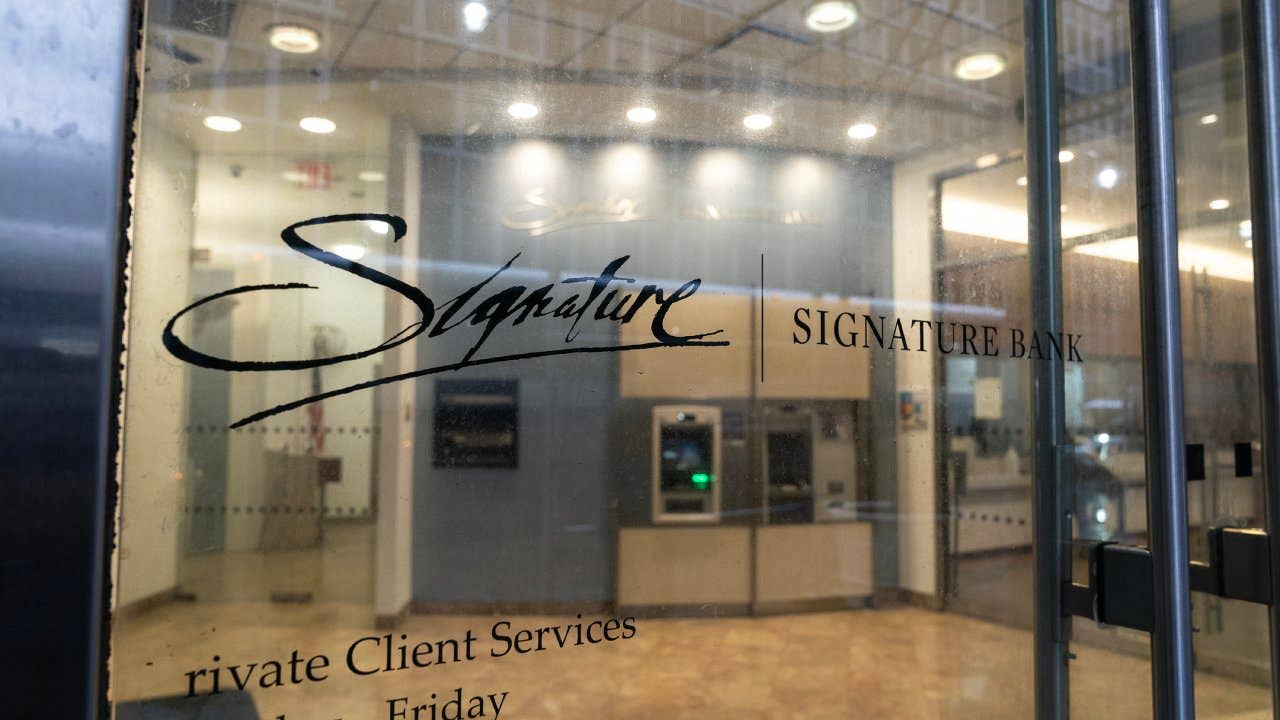Mortgage rates fall after banks fail

The Bankrate promise
At Bankrate we strive to help you make smarter financial decisions. While we adhere to strict , this post may contain references to products from our partners. Here's an explanation for .
Silicon Valley Bank and Signature Bank were hardly household names a few short days ago, but the housing market is feeling the aftershocks of the collapse of both institutions in rapid succession. The failure of these two banks injected a fresh round of unease into the U.S. economy – and sent mortgage rates tumbling.
The average rate on the benchmark 30-year fixed mortgage dropped to 6.94 percent Monday, according to Bankrate research. That’s down from a rate of 7.13 percent Wednesday.
The drop reflected a corresponding decline in Treasurys. “Treasury yields plunged beginning on Friday and throughout the weekend, with the 10-year Treasury yield down 50 basis points from where it had been last Wednesday,” says Greg McBride, Bankrate’s chief financial analyst.
Treasury yields reflect how investors feel about the economy. If optimism reigns, the rates rise. When pessimism takes over, Treasury yields fall.
“Everybody’s panicking globally,” says Kenny Simpson, a mortgage consultant at C2 Financial Corp. in San Diego. “People are pulling their money out of banks. But hopefully, this is isolated.”
For homebuyers, the trend line matters because the 10-year Treasury yield is a reliable indicator of where mortgage rates are headed. While the Federal Reserve sets the overall tone on interest rates, mortgage rates are determined largely by the investors who buy mortgage-backed securities, and they use the 10-year Treasury as a reference point for the yield they expect from mortgages.
“Mortgage rates are falling in classic ‘risk-off’ trading,” says Dan Green, CEO of Homebuyer.com. “Wall Street is selling risky assets and moving into safer ones, including mortgage-backed bonds.”
What’s next for mortgage rates?
Silicon Valley Bank, with $209 billion in assets, and Signature Bank, with $118 billion, were the second- and third-largest bank failures in U.S. history. No U.S. bank had failed since 2020, so this one-two punch sent shockwaves through the financial sector.
Before Silicon Valley Bank folded on Friday, economists and investors had expected the Fed to raise interest rates by 25 basis points or even 50 basis points at the March 22 meeting of the Federal Open Markets Committee. Now, everyone is rethinking – and a less assertive move by the Fed could relieve some of the upward pressure on mortgage rates.
However, it’s also possible that these bank collapses were contained to two troubled institutions, in which case this mini-crisis would soon be forgotten.
“As for where rates go from here, it will depend largely on the stability of the financial system,” McBride says. “If things stabilize and we’re back to worrying about inflation and whether the job market is too hot, the pullback will prove short-lived.”
The sudden banking crisis could sabotage one form of mortgage rate relief – the long-anticipated narrowing of mortgage spreads. The gap between 30-year mortgage rates and 10-year Treasury yields, known to mortgage insiders as “the spread,” typically runs between 1.5 and 2 percentage points. If the 10-year yield stands at 4 percent, for example, the 30-year rate typically ranges between 5.5 and 6 percent.
Spreads have widened to unusually high levels over the past year amid uncertainty about the U.S. economy and concerns about the Fed’s ability to quell inflation. A return to normal spreads would allow mortgage rates to fall. As of February 2023, they remained high, in the range of 270 to 280 basis points. But if spreads calm to the high end of the normal range – 200 basis points – that would cut mortgage rates by about three quarters of a percentage point. There’s a catch: Lower spreads require investors to feel at ease, something that seems unlikely in the shadow of two of the three largest bank collapses in U.S. history.
Mortgage rates after the biggest U.S. bank failure
The largest-ever bank failure occurred in September 2008, when Washington Mutual (WaMu) was forced to close. At the time, the average 30-year mortgage rate was 6.32 percent, according to Bankrate’s national survey of lenders. At first, mortgage rates rose, climbing as high as 6.77 percent a few weeks after the WaMu closing. But six months later, rates had fallen all the way to 5.13 percent.
Of course, the financial and economic circumstances surrounding WaMu’s failure were quite different. It happened at the height of the Great Recession, in which hundreds of banks failed, unemployment soared into the double digits and stocks plummeted — kicked off by the subprime mortgage crisis and a dramatic bursting of the housing bubble.
This latest round of failures so far has claimed just two financial institutions. What’s more, these banking meltdowns occurred against a backdrop of robust jobs numbers – the U.S. unemployment rate stood at just 3.6 percent in February, according to the Labor Department – and an economy that has shown remarkable resilience amid the Fed’s aggressive rate hikes. What’s more, the inventory of homes for sale is so tight that it’s unlikely home prices will crash again.
“Back then, there was so much pain in the system,” Simpson says. “I think it’s completely different today.”
Related Articles



